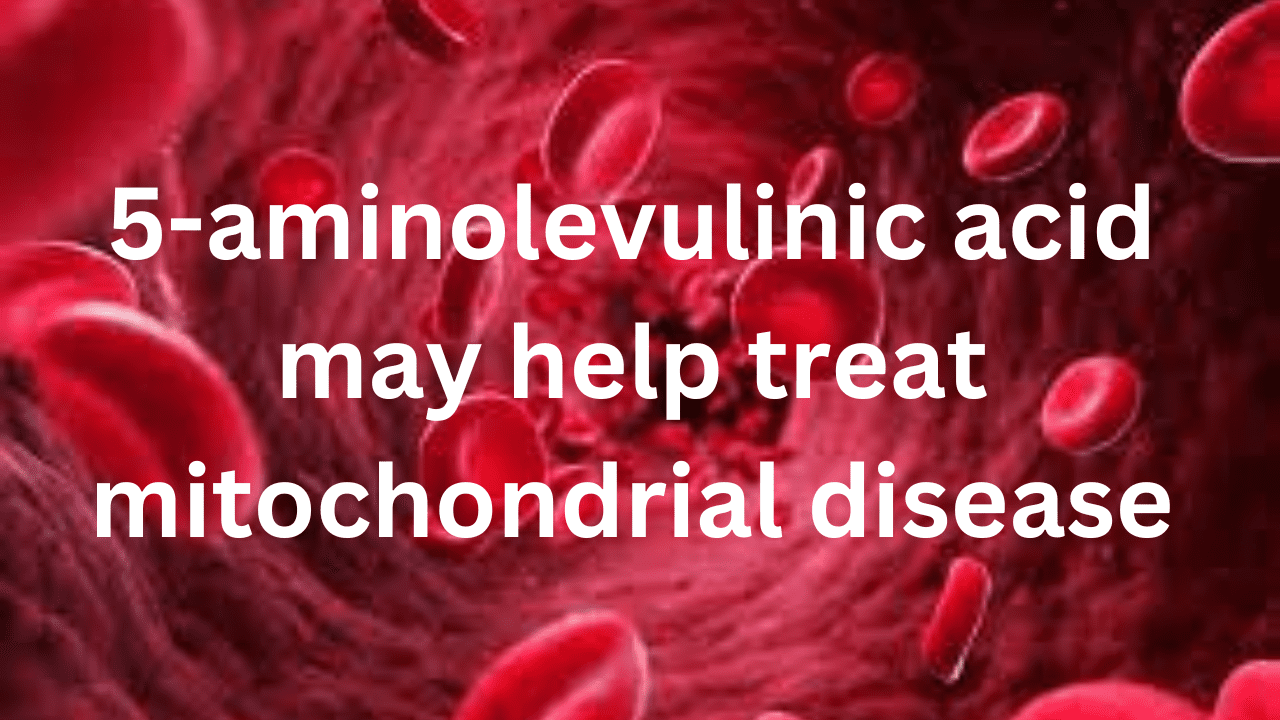5-aminolevulinic acid may help treatmitochondrial disease

Researchers at Tokyo Metropolitan University have discovered that 5-aminolevulinic acid (5-ALA) complex I (CI) helps in mitigating deficiencies, which is the first protein complex in the mitochondrial electron transport chain that aids in providing energy to mitochondria. They found that when fruit flies with protein deficiencies were given a cocktail of 5-ALA, their health improved. Most mitochondrial disorders are caused by CI deficiencies, and the team’s findings could lead to new medical treatments.
Mitochondrial diseases arise from problems within mitochondria, small organelles in cells that produce adenosine triphosphate (ATP), a chemical fuel that powers a vast array of biological processes in our bodies. Issues in energy-demanding parts of the body, such as the brain and muscles, particularly intensify disorders like mitochondrial encephalopathy, lactic acidosis, and stroke-like episodes (MELAS syndrome), which are debilitating conditions. Unfortunately, there is currently no cure, and scientists worldwide are continuously searching for effective treatments.
aminolevulinic acid
A lack of complex I (CI) is a frequent contributor to mitochondrial diseases. The initial protein complex in the chain that transports electrons for energy processes in mitochondria, which ultimately result in the synthesis of ATP, is called CI. It is known that complex II, III, IV, and cytochrome c can also supply electrons for the same activity, hence it is not the only avenue for ATP synthesis. It was unknown, nevertheless, if taking advantage of CI deficiency may be useful in reducing its consequences.
Now, a research from Tokyo Metropolitan University led by Associate Professor Kane Endo has shown that specific CI inhibitors and activators can aid in resolving several chemical deficiencies related to CI. Reverse genetics was used to study fruit flies that had been genetically altered to have fewer CI equivalents; these “knockdown” insects had poor locomotion and developmental problems with neuromuscular connections. However, they discovered that these flies ‘locomotor abilities and neuromuscular junction development increased when they were fed a mixture of 5 aminolevulinic acid and sodium ferrous citrate (SF-C) .Although it wasn’t because of a rise in CI levels, ATP levels also significantly improved. Upon closer inspection, the team discovered that the activities of complex II and IV were enhanced, contributing to the resolution of issues related to CI deficiency. 5 ALA is considered a co-factor for heme, an essential component of complex II, III, IV, and cytochrome c activities. When administered 5-ALA, fruit flies exhibited a shift in their metabolism, utilizing the capacity of CI and CIV to transport electrons and provide energy for ATP production. They also observed that the cells of flies with CI deficiencies had elevated levels of pyruvate and lactate, much like humans suffering from lactic acidosis due to CI deficiency, and 5-ALA helped lower both levels.
Despite the severity of mitochondrial abnormalities, no medication now available that deals with the underlying causes of the different health issues connected to them. The team’s results hold the prospect of fresh medical alternatives for a variety of deadly diseases in addition to offering new insights.
Post by Vivek chauhan from Airynews.com




